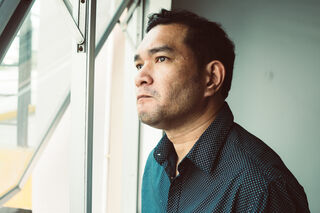Anxiety
How Just One Word Can Help Calm an Anxious Mind
The power of cue-controlled relaxation.
Updated July 5, 2023 Reviewed by Abigail Fagan
Key points
- Cue-controlled relaxation pairs a word with a relaxation technique through classical conditioning.
- Relaxation techniques include paced breathing, mindfulness, and progressive muscle relaxation.
- Developing this skill often requires daily practice.

My mind loves worst-case scenarios. And yours might too. Our brains are hard-wired to protect us, which means they are hard-wired to look out for danger and worst-case scenarios. Anxious brains are constantly scanning the environment for people, situations, and things that could be dangerous and jumping to "what if" scenarios. Because of this, anxiety can easily spiral out of control.
After years of living in my anxious brain, I searched far and wide for a solution. People would always tell me to “just relax" or "stop worrying," but I never found it to be that easy. Finally, while earning my Ph.D. in clinical psychology, I found a way to control my spiraling brain and tense body. And it was easier than I thought. Over time, I learned to quiet my anxieties using one word. Here’s how it works.
What Is Cue-Controlled Relaxation?
Cue-controlled relaxation is a science-backed method that pairs one word with a relaxation technique. This strategy takes advantage of classical conditioning. Remember Pavlov and his dogs?
Ivan Pavlov was a Russian physiologist who learned he could train dogs to salivate at the sound of a bell. He noticed dogs would salivate when he presented food. He would ring the bell and give the dogs food immediately after. Over time, the dogs showed an automatic response — they salivated when Pavlov rang the bell, even without food present.
Cue-controlled relaxation is a type of classical conditioning that pairs a state of relaxation with a word of your choosing. Over time and with practice, saying that one word causes deep relaxation.
Think about that. By taking time to adopt this practice, you can learn to be at ease with one word. Here is a step-by-step way to use this technique.
1. Pick your word.
Pick a word like “relax,” “calm,” or any other word that you associate with deep relaxation. I personally use the word “settle.”
2. Practice relaxation.
Pick a relaxation technique that you can pair with your word. Paced breathing is a great starter exercise. Breathe in for a count of four and out for a count of six. As you breathe out, say your cue word. As you breathe out, feel your muscles relax. Let everything go — especially common areas of tension, like the jaw, eyes, shoulders, or hands. Practice this for three to five minutes, or until you feel completely relaxed.
Other relaxation techniques include mindfulness, progressive muscle relaxation, and other breathing techniques.
Continue to practice daily. Aim to practice two to three times per day.
3. Shorten the time you practice.
Once you’ve practiced daily and effectively paired your cue word with a relaxed state, you’re ready to gradually reduce the time it takes to relax with your cue word. Shorten your breathing exercise in increments of one minute. Don't move on to the next time increment until you can achieve a relaxed state. Shorten the time until eventually, just saying the word relaxes your mind and body.
4. Enjoy relaxation.
Once you practice these steps, you are ready to use one word to achieve a state of deep relaxation. One word to reduce stress. One word to quiet your worrying mind. Sit back while you use one word to take back control of your life.
Now when someone tells you to “just relax,” you actually can.
Sign up for my free newsletter.
LinkedIn image: Zmaster/Shutterstock. Facebook image: 2p2play/Shutterstock.


